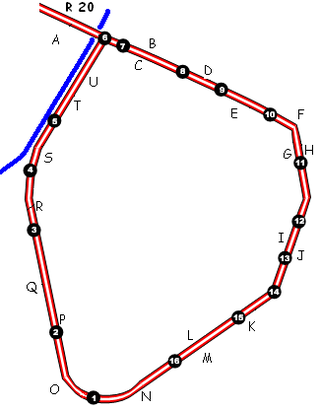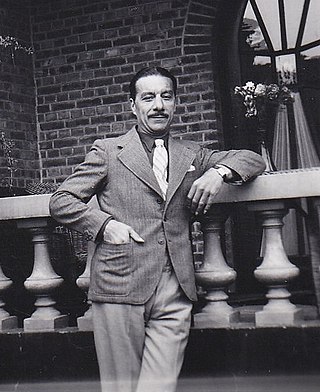N23 East
The eastern branch has two separate roadways for each direction. The eastbound section begins at the Arts-Loi/Kunst-Wet intersection of the small ring and the N3 road, briefly following Boulevard du Regent/Regentlaan before travelling eastwards on Rue Belliard/Belliardstraat for about one kilometer. Just outside of the Leopold Park the N23 enters the Belliard tunnel and this leads the road to the so-called Reyers Complex, the junction of the Greater ring (R21) and the A3 motorway, which is the continuation of the N23. Combined length is 3.2 kilometers. The N3 eastbound joins the N23 eastbound from the beginning but branches off inside the Belliard tunnel.
The westbound section begins at the Reyers Complex, where the A3 motorway continues as the N23 into the Reyers-Centre tunnel. At the end of this tunnel, next to Place des Gueux/Geuzenplein, the road follows Avenue de Cortenbergh/Kortenberglaan towards Schuman roundabout in the European Quarter. Between this point and the Arts-Loi/Kunst-Wet intersection the N23 joins the N3 on Rue de la Loi/Wetstraat. Combined length is 2.9 kilometers.
Avenue de Roodebeek/Roodebeeklaan which is located on top of the Reyers-Centre tunnel has the designation N23a. The section of Rue Froissart/Froissartstraat between Rue Belliard/Belliardstraat (there N295) and the Schuman roundabout is designated N23b. This forms an alternative for the Belliard tunnel above ground.

Parc (French) or Park (Dutch) is a Brussels Metro station located beneath Brussels Park in central Brussels, Belgium. It has one entrance, at the intersection of the Rue Royale/Koningsstraat and the Rue de la Loi/Wetstraat, two of the main roads of the City of Brussels.

Brussels-Schuman railway station is a railway station in the City of Brussels, Belgium, serving the European Quarter. It received its name from the area around the Robert Schuman Roundabout, itself named after Robert Schuman, one of the founding fathers of the European Union.

The Rue de la Loi or Wetstraat (Dutch), meaning "Law Street", is a major street running through central and eastern Brussels, Belgium, which is famous due to the presence of several notable Belgian and European Union (EU) governmental buildings. The road runs from the Rue Royale/Koningsstraat, in central Brussels, to the Robert Schuman Roundabout in its European Quarter. It forms the first (westerly) part of the N3 road that runs to Aachen, Germany.

The Justus Lipsius building, located in Brussels, Belgium, was the headquarters of the Council of the European Union from 1995, and the de facto home of the European Council from 2002, until their relocation to the adjacent newly constructed Europa building at the beginning of 2017. The building, which has a gross surface area of 227,278 m2, still provides for additional meeting rooms, office space and press facilities for both institutions. It consists of 17 conference rooms with at least 10 interpretation booths each, 5 other meeting rooms and 2 rooms for official meals. It also provides 40,048 m2 of offices for both institutions' shared General Secretariat. An onsite press centre is also featured, which can be extended during summits with up to 600 seats in the atrium. It is linked, via means of two skyways and a service tunnel, to the Europa building.

Brussels (Belgium) is considered the de facto capital of the European Union, having a long history of hosting a number of principal EU institutions within its European Quarter. The EU has no official capital but Brussels hosts the official seats of the European Commission, Council of the European Union, and European Council, as well as a seat of the European Parliament. In 2013, this presence generated about €250 million and 121,000 jobs. The main rationale for Brussels being chosen as "capital the European Union" was its halfway location between France and Germany, the two countries whose rivalry played a role in starting the two World Wars and whose reconciliation paved the way for European integration.

The Small Ring inner ring road, formally R20 and N0 is a series of roadways in central Brussels, Belgium, surrounding the historic city centre. The city centre is usually defined as the area within the Small Ring; this area is called the Pentagon due to its pentagonal shape. The pentagon forms the core of the City of Brussels municipality.

Brussels-North railway station is one of the three major railway stations in Brussels, Belgium; the other two are Brussels-Central and Brussels-South. Every regular domestic and international train passing there has a planned stop. The station has 200,000 passengers per week, mainly commuters, making it one of the busiest in Belgium.

The Robert Schuman Roundabout, sometimes called Robert Schuman Square, is a roundabout at the end of the Rue de la Loi/Wetstraat in Brussels, Belgium, that serves as a focus for major institutions of the European Union (EU). It is named after Robert Schuman, one of the founding fathers of the European Union, and gives its name to the surrounding district and Brussels-Schuman railway station.

The Avenue de Tervueren or Tervurenlaan is a major thoroughfare in Brussels, Belgium. It was originally commissioned by King Leopold II as part of his building campaign, and was finished in 1897, in time for the Brussels International Exhibition of that year.
The Greater Ring or Intermediate Ring in Brussels, Belgium is a set of roads in the shape of a ring, intermediate between the Small Ring and the main Brussels Ring motorway. The greater part of this set of roads is numbered R21 and is about 30 km long, compared to 8 km for the Small Ring and 80 km for the main Ring.

The Brussels Ring numbered R0, is a ring road surrounding the city of Brussels as well as other smaller towns south of Brussels. It is about 75 kilometres (47 mi) long, with 2 or 3 lanes in each direction. While most of it is classified as a motorway (highway), part of it is merely an express route. It crosses the 3 regions of Belgium: its main part is situated in Flanders, whereas Wallonia comprises 18.2 kilometres (11.3 mi) of the total stretch and 5.5 kilometres (3.4 mi) is on Brussels territory.

The N3 road in Belgium is a national road connecting the capital city Brussels to Aachen in Germany via Leuven, Tienen, Sint-Truiden and Liège. Its course is quite similar to that of European route E40 between Brussels and Aachen, which it intersects 3 times. The road runs through the 3 Belgian regions and the 3 communities.

The tram route 19 in Brussels, Belgium, is a tram route operated by STIB/MIVB, which connects the Flemish town of Groot-Bijgaarden in the municipality of Dilbeek to the De Wand stop in Laeken in the City of Brussels.

The Rue Belliard (French) or Belliardstraat (Dutch) is a major street in Brussels, Belgium, running parallel to the Rue de la Loi/Wetstraat. Both are one-way streets; where traffic in the Rue de la Loi runs in the western direction towards Brussels' city centre, the Rue Belliard runs in the eastern direction, away from the city centre.

The Cinquantenaire Arcade is a memorial arcade in the centre of the Parc du Cinquantenaire/Jubelpark in Brussels, Belgium. The centrepiece is a monumental triple arch known as the Cinquantenaire Arch. It is topped by a bronze quadriga sculptural group with a female charioteer, representing the Province of Brabant personified raising the national flag.

The Concert Noble is a ballroom built by Hendrik Beyaert in Brussels, Belgium. It is located in the Leopold Quarter, at 82, rue d'Arlon/Aarlenstraat, between Rue Belliard/Belliardstraat and Rue de la Loi/Wetsraat.

Antoine Varlet was a Belgian architect. He specialised in luxury apartment buildings in Beaux-Arts and later Art Deco styles.
Beliris is a joint venture between the Belgian Federal State and the Brussels Region.















